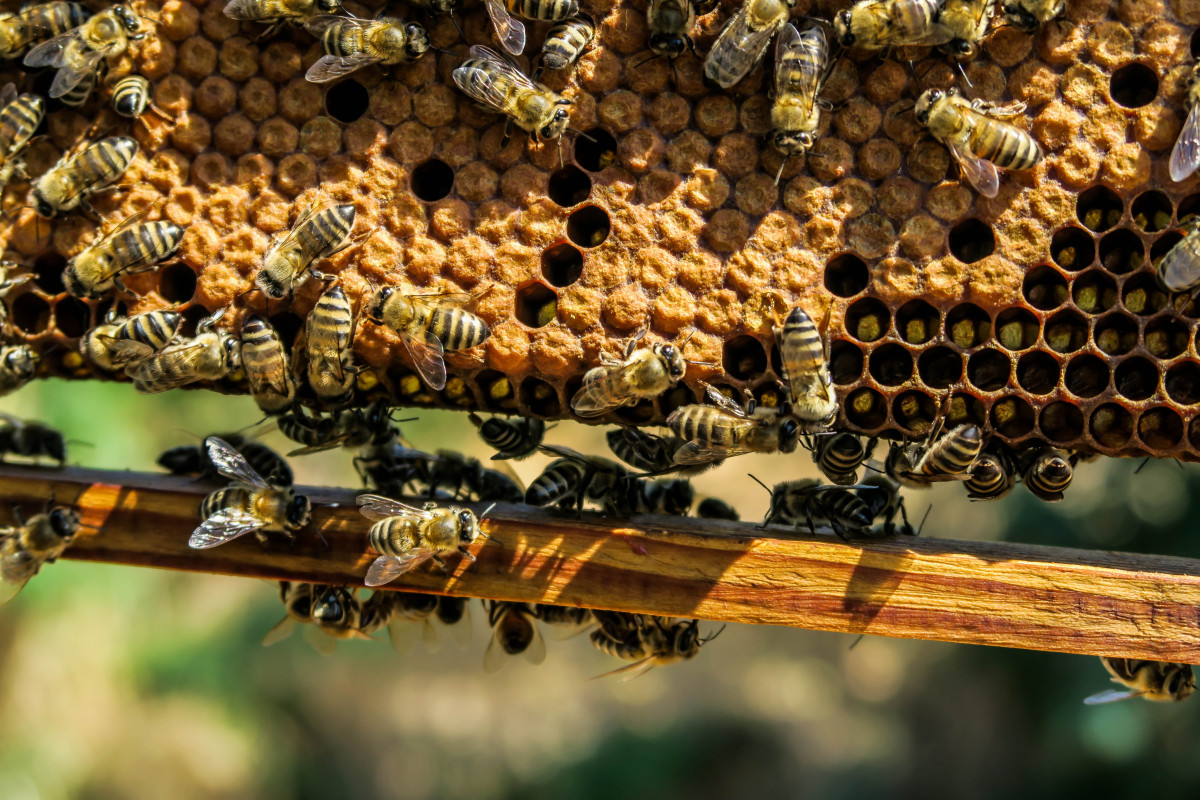10 interesting facts about bees are quite concise and important. Bees descended from wasps in the Crabronidae family, which were predators of other insects. The transition from insect prey to pollen may have occurred as a result of the wasp larvae eating prey insects that were flower visitors and were partially coated in pollen when they were fed. Everyone should learn these 10 interesting, basic facts about bees.
This identical evolutionary process may have occurred among the vespoid wasps, where the pollen wasps developed from predatory predecessors. The earliest non-compression bee fossil is found in New Jersey amber, Cretotrigona prisca, a corbiculate bee of Cretaceous age (~65 mya).
Melittosphex burmensis, a fossil from the Early Cretaceous (100 million years ago), was once thought to be “an extinct lineage of pollen-collecting Apoidea sister to the modern bees,” but subsequent research has refuted this claim, instead of classifying Melittosphex as incertae sedis within the Aculeata. There was already a lot of variety among eusocial bee lineages during the Eocene (45 million years ago).
Around 87 Mya, the extremely eusocial corbiculate Apidae emerged, and around 53 Mya, the Allodapini (within the Apidae). Only from the late Oligocene (25 Mya) through the early Miocene do the Colletidae occur as fossils.
The Melittidae are known from the Early Eocene Palaeomacropis eocenicus. The Megachilidae are known from Middle Eocene trace fossils (distinctive leaf cuts).
The Andrenidae are known from the Florissant shale’s Eocene-Oligocene border, about 34 Mya. The Halictidae family first appears in the Early Eocene, with amber-based species. The Stenotritidae are known from Pleistocene-era fossil brood cells.
10 interesting facts about bees
Let’s find below 10 interesting facts about bees
1. Worker bees have barbed stingers, whereas queen bees have smooth stingers that they use to kill other queen bees.
2. Around 50,000 bees may be found in an average beehive.
3. To create one pound of honey, foragers must collect nectar from around 2 million blossoms.
4. Chemicals called pheromones are the primary means of communication among honey bees.
5. The honey bee is the only creature that generates sustenance for humans.
6. Honey is one of the few foods that never spoils.
7. During a pollen-gathering journey, a honey bee may travel up to 6 kilometers.
8. In the United States, the average per capita intake of honey is 1.3 pounds.
9. The wings of a bee are divided into two pairs.
10. Honey is the only food that provides all of the nutrients required for life.
More Interesting Articles
- Thomson Safaris Kilimanjaro – A Guide from Tourists
- Safari near Victoria Falls: What Other Travelers Follow
- Great Migration Serengeti – A Wonder of the Wild
- Serengeti National Park Facts and Tour
- Busanga Plains – Camping and Wilderness Safaris
- Sossusvlei Camping and Trip for Adventure Lovers
- Namibia Safe Road Trip Guide for the Daredevils
- 32 Essential Tips on Namibia Guided Tours
- 11 Memorable Safari Trip Options to South Africa
- That is Why Travelers Find South Africa Safe to Travel
- 12 Great Attractions of Zimbabwe Safari Experience
- Unique Attractions of Mozambique Tours and Travels
- What to See in the Madagascar Tours and Travels
- Great Attractions of Thrilling Malawi Safari
- 11 Great Spots to Spot in Botswana Safari
- Ultimate Namibia Road Trip Itinerary
- How Much does it Cost to Travel to Zambia?
- Adventurous Kenya Safari Tours for Daredevils
- Zambia Safari Tips for the Adventure Lovers
- 13 Best Places For Safari Trip to Zambia

